The first time I ever hit the tropical flats — armed with my finely tuned small-stream trout cast — I didn’t catch a single bonefish. Not one. But my failure started me on an odyssey that will likely never end. Chasing bones on the flats, from the Bahamas across the Caribbean to the Mayan Riviera, might be my favorite fly fishing pursuit.
And damn my luck for it.
First, I live in landlocked Idaho — a long flight to anywhere bonefish might prowl the flats. Second, the ongoing pandemic has made travel to tropical locales complicated. There’s no easy or eminently affordable way to just drop everything and disappear to the cyan flats of Chetumal Bay or Dead Man’s Cay on a whim.
Nevertheless, since that first ill-fated visit, I’ve become a competent flats angler. While I have since chased permit and tarpon as well, I remain a bonefisher at heart. More eager to take a fly than permit and more predictable than tarpon, bones might be the perfect quarry for an angler who loves to walk and wade and experience the flats environment. What, at first glance, might look like a watery, shallow desert is an amazing ecosystem with an admirable food chain brimming with life. And standing knee-deep in the salt staring madly across the water for movement brings out the predator within. Indeed, bonefishing is more hunting than fishing.
And it’s one hunter chasing another. When bones are cruising the flats or tailing in a foot of water, they’re after the little shrimp and crabs that provide their diet. If we can, without spooking these wary fish, place a fly that reasonably resembles their prey on an intersecting course with a moving fish, we can connect with a fish that is, pound for pound, one of the strongest, fastest fish in the ocean.
But, until the last decade or so, very little was known about bones when they weren’t cruising the flats. It was assumed that they spent time in deeper water, and that the flats they cruise are simply their buffett line. Turns out, we didn’t know the half of it.
While bonefish do, indeed, spend the bulk of their lives living in just a few feet of water, it was learned in 2013 that bones would often dive deep in large schools during the spawning season. Research at the time indicated that the fish would congregate and then dive as deep as 164 feet, where a broadcast spawning process would start.
But a new study, released by Florida Atlantic University, the Bonefish and Tarpon Trust and the University of Massachusetts Amherst proves that bones often dive much deeper than initially believed to complete the spawning process.
According to the study, bones will migrate some 80 kilometers from shore (almost 50 miles) in schools ranging from 5,000 to 10,000 fish and dive to depths of 450 feet to spawn. Talk about a drastic change of scenery for a nearshore fish that spends the majority of its life in very shallow water.
“This is the first detailed documentation of such deep spawning for a shallow water coastal fish species,” the study reads. “The ecological motivation for diving to the deepest depths remains speculative. Future work must examine the dynamic relationship between bonefish diving behavior, spawning site selection, and oceanographic features.”
In other words, this new information has likely spurred more questions than answers.
"We were stunned by this discovery because the bonefish moved out beyond the incredibly abrupt and steep shelf drop off into the Providence Channel in Abaco (in the Bahamas, where the study was performed)," said Steven Lombardo, first author and a Ph.D. candidate, who worked on the study in a news release from FAU. Lombardo who works with Matt Ajemian, Ph.D., senior author, an assistant research professor at FAU's Harbor Branch, and the head of the Fisheries Ecology and Conservation Lab. "Data from our acoustic telemetry tags showed us in real time that bonefish were capable of handling extreme pressures. When they reached 334 feet in the first dive, we were floored, and 45 minutes later when they reached 450 feet deep, we were absolutely astonished."
Researchers used active acoustic telemetry to observe the spawning movements of the fish — this involves implanting selected bonefish with small tags about the size of a pill into the fish’s abdomen. The tags give off an ultrasonic “ping” every three seconds, allowing scientists to follow the movements of the fish from a boat-mounted directional hydrophone. Signal strength helped the researchers determine where the fish were, where they were headed and, when they dove, how deep they got and the temperature of the water at that depth.
According to the study, scientists spent four days using every available daylight hour to follow and observe the fish. On the evening of the fourth day — the last scheduled day of the study — they noticed the bonefish porpoising and gulping air at the surface. Then the fish moved off the edge of the continental shelf, dove deep and spent the next 18 hours spawning.
“Following the bonefish on their offshore spawning migration was a marathon for the science team as well as the fish,” said Aaron Adams, Ph.D., co-author, senior scientist at FAU’s Harbor Branch and director of science and conservation at Bonefish & Tarpon Trust. “Most importantly for conservation, now that we know the conditions bonefish require to spawn we can better focus our efforts for habitat conservation.”
Unfortunately, there are still many questions about bonefish and their complete life cycle. According to BTT, bonefish in the Pacific Ocean spawn around the full moon all across the calendar. In the Caribbean, scientists know that bones spawn between November and May. The hatched fish essentially live as plankton for as long as two months or or more before they find shallow water and evolve into a miniature version of their parents. But nobody really knows where this occurs, and scientists also don’t have a really good handle on where smaller juvenile fish spend their days.
Flats anglers, all across the globe — even those of us here in Idaho — know that larger juveniles and sub-adults start turning up on our favorite flats throughout the year. These are often the fish we catch when we see “muds,” or large areas of disturbed water where fish are actively feeding.
For a fish that has captured the hearts of many a fly fisher, precious little is known about their complete existence. Work continues, particularly in the education and conservation sectors, where bones are marketed for their attributes as game fish. Yes, they are harvested around the world for food, but BTT and other sportfishing and conservation groups are working to reduce that practice, noting the economic benefits bonefish provide to otherwise austere economies worldwide.
In the Bahamas, for instance, the flats fishing industry is worth more than $140 million annually to the nation’s economy. The average flats fisher will spend more than $4,500, largely pursuing bonefish. These fish are clearly more valuable as protected game species than as table fare.
For fly fishers, there might not be a better fish than bonefish. Certainly, traditional freshwater species like trout and bass will always be important, but for many, bonefish provide the excuse to spend thousands of dollars on airline tickets, lodges, guides and all the accoutrements that accompany a flats-fishing trip.
For a lot of us, assuming the world gets a tighter grip on the coronavirus pandemic in the coming months (or years, spare us), one of the first things we’ll do is book a trip to the tropics and hope the bones are still there.




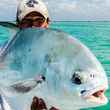
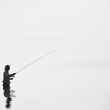

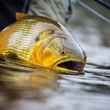









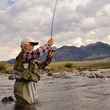



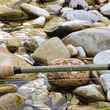





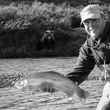


Comments
John Byron replied on Permalink
Two years ago Dr Jon Shenker talked to our local fly fishing club on this topic. Video of his pitch here: https://www.youtube.com/watch?v=CTf2UPT3meU
Marian Jayne of Beyond The Blue took the video on her iPhone.
Worth watching.
Pages